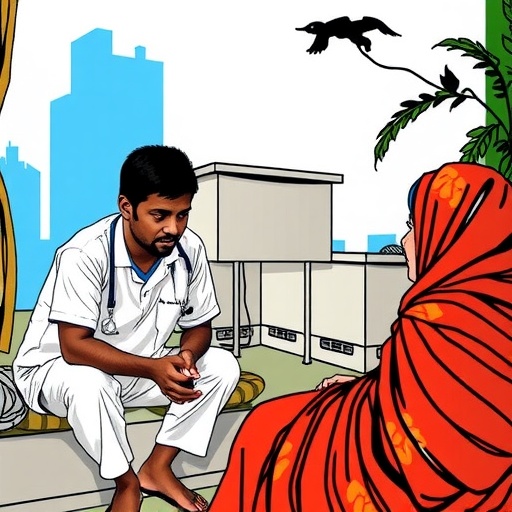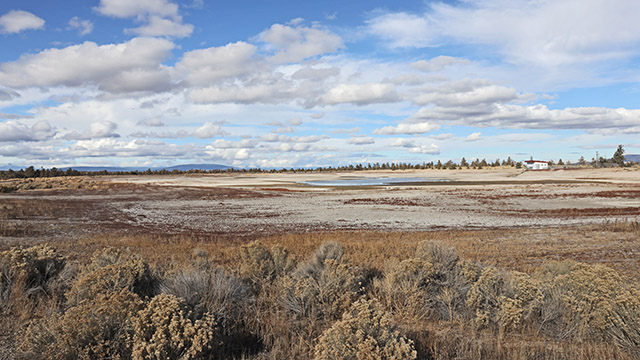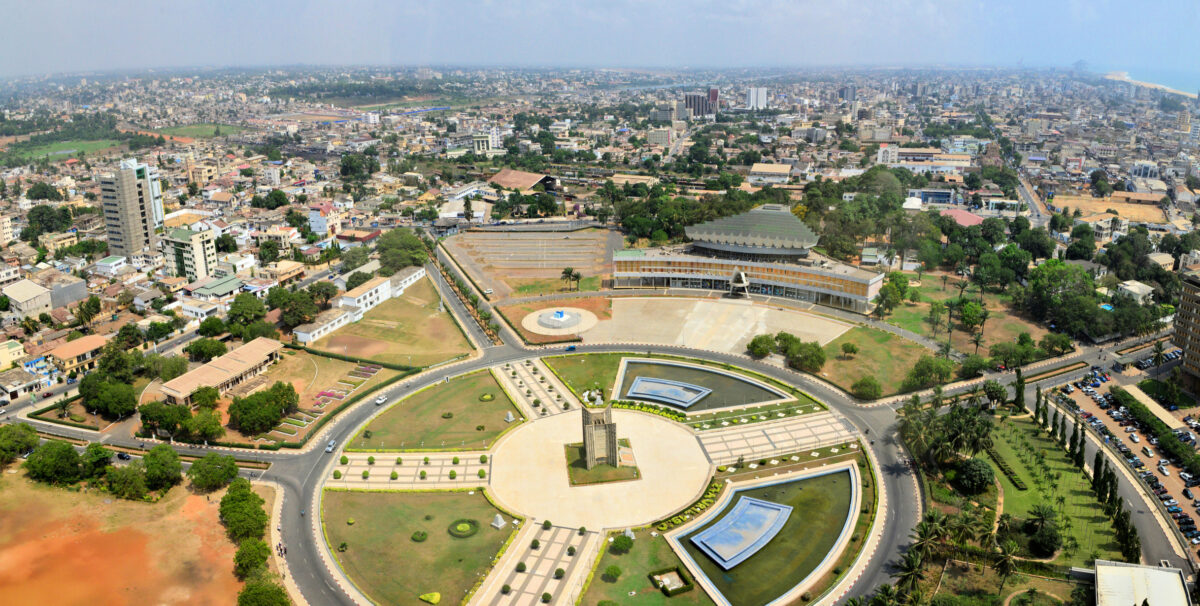Preparing SD for likelihood of more extreme weather events – mykxlg.com

Report on Climate Change Impacts and Sustainable Development in South Dakota
Executive Summary
Recent severe weather events in South Dakota, including multiple tornadoes, underscore the escalating impacts of climate change. According to the State Climatologist, these patterns are projected to intensify, necessitating urgent action aligned with the United Nations Sustainable Development Goals (SDGs). This report outlines the observed climatic shifts, their direct consequences, and the recommended adaptation strategies, with a significant focus on SDG 13 (Climate Action), SDG 11 (Sustainable Cities and Communities), SDG 2 (Zero Hunger), SDG 3 (Good Health and Well-being), and SDG 8 (Decent Work and Economic Growth).
Analysis of Changing Weather Patterns and Link to SDG 13: Climate Action
Scientific evidence increasingly links climate change to the frequency and intensity of extreme weather. The core issue, as identified by State Climatologist Laura Edwards, is rising temperatures, which lead to greater atmospheric moisture. This directly contributes to more severe weather phenomena, demanding immediate climate action as outlined in SDG 13.
Key Projections and Observations
- Increased Storm Energy: Higher temperatures result in the atmosphere holding more moisture, which fuels heavier rainfall and provides more energy for high-velocity winds and storm formation.
- Concentrated Tornado Activity: Future weather patterns may feature fewer total days with tornadic events. However, the days that do experience such activity are projected to produce a higher number of tornadoes.
- Prolonged Drought Conditions: Interspersed with periods of intense storms will be longer, hotter, and drier spells, exacerbating the risk of extreme drought and impacting water resources.
Implications for Key Sustainable Development Goals
The observed and projected climate shifts have profound implications across multiple sectors, directly challenging the achievement of several SDGs. Proactive and sustainable adaptation is critical to building resilience.
SDG 11: Sustainable Cities and Communities & SDG 15: Life on Land
To make communities inclusive, safe, resilient, and sustainable, land and water management practices must adapt. Protecting terrestrial ecosystems from degradation is paramount.
Recommended Adaptation Strategies:
- Sustainable Land Management: Educating landowners and agricultural producers on best management practices is crucial to prevent soil erosion and nutrient runoff during heavy storms.
- Water Retention and Soil Health: Implementing techniques to hold water in the soil mitigates the dual threats of flooding and drought, supporting SDG 15’s goal to combat desertification.
- Resilient Infrastructure: Homeowners and municipalities are encouraged to improve property-level drainage through strategies like rain gardens to manage storm water effectively.
SDG 3: Good Health and Well-being & SDG 8: Decent Work and Economic Growth
Climate change poses direct threats to human health and occupational safety, particularly for those in outdoor labor sectors.
Impacts and Adaptive Measures:
- Occupational Heat Stress: Outdoor workers face increasing risks from extreme heat. In response, the labor force is adopting new safety protocols, such as mandatory water breaks and earlier start times for the workday, to protect worker well-being (SDG 3) and ensure safe working conditions (SDG 8).
- Public Health Concerns: Climate change is linked to longer and more severe allergy seasons. The ragweed pollen season in the Northern Plains has extended by up to 21 days compared to 1995, negatively impacting public health.
Which SDGs are addressed or connected to the issues highlighted in the article?
- SDG 13: Climate Action: The entire article focuses on the impacts of climate change, such as more intense storms, tornadoes, drought, and extreme heat in South Dakota, and discusses the need for adaptation.
- SDG 2: Zero Hunger: The article mentions the importance of educating farmers on best management practices to manage soil and water in response to extreme weather, which relates to sustainable and resilient agriculture.
- SDG 3: Good Health and Well-being: The health impacts of climate change are discussed, including heat stress for outdoor workers and longer, more severe pollen seasons for allergy sufferers.
- SDG 8: Decent Work and Economic Growth: The article highlights how outdoor workers are adapting to extreme heat by taking mandatory water breaks and starting their workday earlier, which pertains to ensuring safe working environments.
- SDG 11: Sustainable Cities and Communities: The article discusses clearing damage from storms and implementing preventive measures like improving home drainage with rain gardens to make homes and communities more resilient to climate-related disasters.
- SDG 15: Life on Land: The focus on managing land to prevent runoff, hold water in the soil, and cope with longer periods of drought directly relates to combating desertification and sustainably managing terrestrial ecosystems.
What specific targets under those SDGs can be identified based on the article’s content?
-
SDG 13: Climate Action
- Target 13.1: Strengthen resilience and adaptive capacity to climate-related hazards and natural disasters in all countries. The article directly addresses this by discussing the increasing frequency of tornadoes, heavy rain, and heatwaves in South Dakota and the need for residents and workers to adapt.
- Target 13.3: Improve education, awareness-raising and human and institutional capacity on climate change mitigation, adaptation, impact reduction and early warning. This is supported by the state climatologist’s call to educate landowners and farmers about best management practices and raise awareness among outdoor workers about heat stress.
-
SDG 2: Zero Hunger
- Target 2.4: By 2030, ensure sustainable food production systems and implement resilient agricultural practices that increase productivity and production, that help maintain ecosystems, that strengthen capacity for adaptation to climate change, extreme weather, drought, flooding and other disasters and that progressively improve land and soil quality. The recommendation for farmers to adopt practices that “prevent runoff from a heavy storm and hold that water in the soil” is a direct example of implementing resilient agricultural practices.
-
SDG 3: Good Health and Well-being
- Target 3.d: Strengthen the capacity of all countries… for early warning, risk reduction and management of national and global health risks. The article points to climate-related health risks like “heat stress” and “longer and more severe pollen seasons,” and the preventive measures being taken are a form of risk management.
-
SDG 8: Decent Work and Economic Growth
- Target 8.8: Protect labour rights and promote safe and secure working environments for all workers… The article describes measures taken to protect outdoor workers from extreme heat, such as “mandatory water breaks” and “an earlier start to the workday,” which are actions to promote a safer working environment.
-
SDG 11: Sustainable Cities and Communities
- Target 11.5: By 2030, significantly reduce the number of deaths and the number of people affected and substantially decrease the direct economic losses… caused by disasters. The article’s mention of clearing “damage from last week’s intense storms” and strategies to “minimize harmful effects” like improving home drainage relates to reducing the impact of climate-related disasters.
-
SDG 15: Life on Land
- Target 15.3: By 2030, combat desertification, restore degraded land and soil, including land affected by… drought and floods… The article’s discussion of “longer stretches of hotter, drier weather that fuels extreme drought” and the need for practices to “hold that water in the soil” aligns with this target.
Are there any indicators mentioned or implied in the article that can be used to measure progress towards the identified targets?
-
For Targets 13.1 and 11.5 (Resilience to Disasters)
- Implied Indicator: Frequency and intensity of extreme weather events. The article mentions “intense storms, including a handful of tornadoes” and predicts “fewer days of tornado activity. But those days that we do have tornado activity, you see more tornadoes on those days.”
- Implied Indicator: Economic damage from storms. This is implied by the statement that “South Dakotans continue to clear damage from last week’s intense storms.”
-
For Target 13.3 (Education and Awareness)
- Implied Indicator: Number of people educated on climate adaptation. This is implied by the call to “educate landowners, namely farmers, about best management practices.”
-
For Target 3.d (Health Risk Management)
- Mentioned Indicator: Change in the length of the pollen season. The article explicitly states, “the ragweed season in the Northern Plains is now 10 to 21 days longer than it was in 1995.”
-
For Target 8.8 (Safe Working Environments)
- Implied Indicator: Adoption of policies to mitigate heat stress for outdoor workers. This is implied by the observation that outdoor workers now take “mandatory water breaks” and have “an earlier start to the workday.”
-
For Targets 2.4 and 15.3 (Sustainable Land Management)
- Implied Indicator: Area of land under sustainable management practices. This is implied by the recommendation for farmers to adopt practices that “prevent runoff from a heavy storm and hold that water in the soil.”
Table of SDGs, Targets, and Indicators
| SDGs | Targets | Indicators (Mentioned or Implied in the Article) |
|---|---|---|
| SDG 13: Climate Action | 13.1: Strengthen resilience and adaptive capacity to climate-related hazards. 13.3: Improve education and awareness-raising on climate change adaptation. |
– Increased frequency/intensity of tornadoes on active days. – Number of landowners educated on best management practices. |
| SDG 2: Zero Hunger | 2.4: Ensure sustainable food production systems and implement resilient agricultural practices. | – Adoption of practices by farmers to prevent runoff and hold water in soil. |
| SDG 3: Good Health and Well-being | 3.d: Strengthen capacity for early warning, risk reduction and management of health risks. | – Increase in the length of the ragweed pollen season (10 to 21 days longer than in 1995). |
| SDG 8: Decent Work and Economic Growth | 8.8: Promote safe and secure working environments for all workers. | – Implementation of mandatory water breaks and earlier start times for outdoor workers. |
| SDG 11: Sustainable Cities and Communities | 11.5: Reduce the number of people affected and economic losses from disasters. | – Amount of damage from intense storms and tornadoes. – Implementation of home drainage strategies like rain gardens. |
| SDG 15: Life on Land | 15.3: Combat desertification and restore land affected by drought. | – Occurrence of longer stretches of hotter, drier weather fueling extreme drought. |
Source: mykxlg.com

What is Your Reaction?
 Like
0
Like
0
 Dislike
0
Dislike
0
 Love
0
Love
0
 Funny
0
Funny
0
 Angry
0
Angry
0
 Sad
0
Sad
0
 Wow
0
Wow
0


-1920w.png?#)





































































